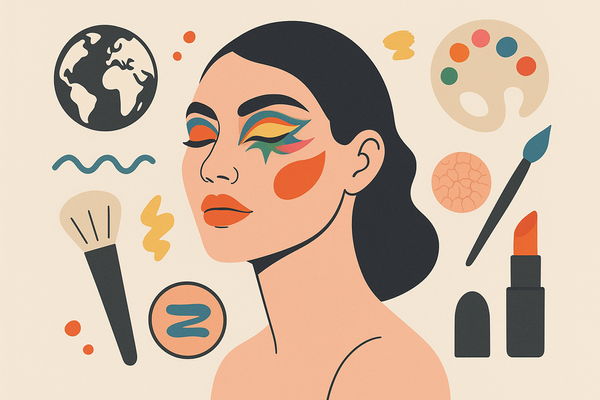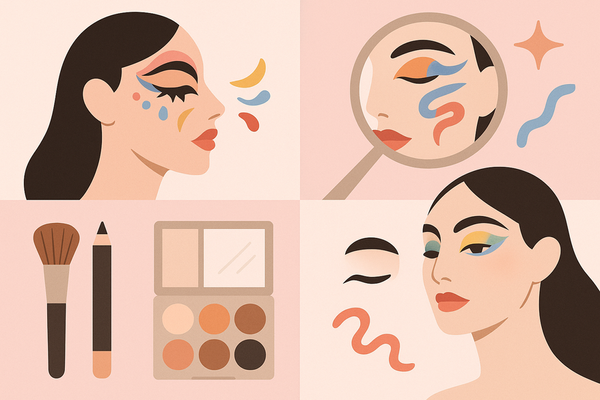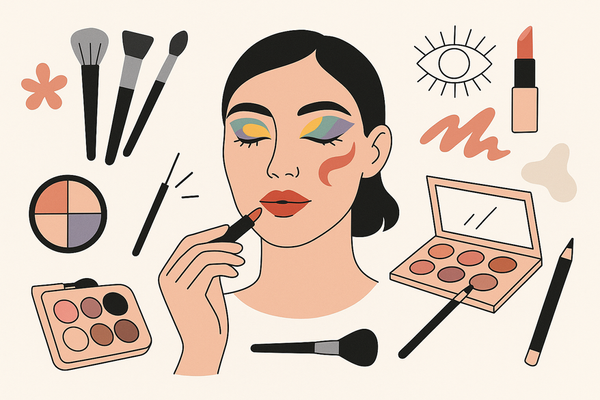10 Expert Indoor Makeup Lighting Hacks for Flawless Results
Discover expert indoor makeup lighting hacks to achieve flawless results by eliminating shadows and correcting color distortion for perfect blending without natural light.

Estimated reading time: 8 minutes
Key Takeaways
- Optimal lighting prevents color distortion and harsh shadows.
- Aim for a CRI ≥ 90 and a color temperature of 5000K–6500K for accurate color rendering.
- Combine natural light with cool LEDs or ring lights for balanced illumination.
- DIY diffusers and budget-friendly bulbs can upgrade any space under $50.
- Regular maintenance and the right tools keep your setup consistent and professional.
Table of Contents
- Introduction: Indoor Makeup Lighting Hacks Explained
- The Importance of Good Lighting for Makeup
- Understanding Different Types of Indoor Lighting
- Top Indoor Makeup Lighting Hacks
- DIY Techniques and Budget-Friendly Solutions
- Expert Tips and Product Recommendations
- Conclusion: Master Your Indoor Makeup with Lighting Hacks
- FAQ
Introduction: Indoor Makeup Lighting Hacks Explained
Indoor makeup lighting hacks are practical techniques and tools designed to optimize your indoor lighting environment for flawless makeup application. By tweaking your light sources and setup, you can see true-to-life colors, avoid harsh shadows, and blend foundation, contour, and highlight precisely—no matter the room or time of day. Good illumination isn’t just a luxury; it’s a makeup essential. Without it, you risk uneven foundation, mismatched tones, and contour lines that look great in your bathroom but disappear outdoors.
In this guide, you’ll learn why proper lighting matters, how to choose and position different light types, and which budget-friendly DIY tricks pros swear by. Say goodbye to bad lighting days and hello to consistent, camera-ready makeup—morning, noon, or night.
The Importance of Good Lighting for Makeup
Proper light quality transforms an average makeup application into a flawless finish. Two key metrics matter:
- Color Rendering Index (CRI): Measures how accurately a light source shows true colors. Aim for CRI ≥ 90 to ensure foundations, blushes, and eyeshadows look as intended.
- Color Temperature (Kelvin): Indicates warmth or coolness. Daylight bulbs (5000K–6500K) mimic midday sun, while warm bulbs (below 3000K) cast yellow-orange hues.
Common indoor lighting challenges:
- Harsh shadows that hide fine lines, blemishes, or delicate blending.
- Color distortion from overly warm or tinted bulbs, causing your foundation to look orange or ash-gray.
- Uneven illumination in windowless spaces—think top-down overhead lights that accentuate under-eye hollows.
Outcome of poor lighting:
- Uneven foundation leading to patchy coverage.
- Contour and highlight that appear overdone or too subtle in different settings.
- Blush tones that don’t translate outdoors, leaving you looking washed out or clown-faced.
Real-world example: A YouTuber tested two identical makeup looks under warm LED vs. daylight-mimicking bulbs and saw a pronounced difference in how her skin tone registered on camera—warm bulbs made her appear sallow, while 5500K LEDs delivered vibrant, accurate color. For more on refining your selfie-ready lighting, see our Selfie Lighting Makeup Tips guide.
Understanding Different Types of Indoor Lighting
Knowing your light sources—each with unique benefits and drawbacks—helps you tailor your setup for precision makeup.
A. Natural Light (Window Light)
- Benefits: True-to-life color rendering; balanced shadows for seamless blending.
- Limitations: Fluctuates with weather and time of day; not always accessible in interior rooms or at night.
B. LED Bulbs (Daylight-Mimicking)
- Benefits: Consistent, flicker-free brightness; customizable with dimmable sockets and smart bulbs.
- Limitations: Quality varies—always check Kelvin rating and CRI on packaging.
C. Ring Lights & Vanity Mirrors
- Benefits: Front-facing, shadow-minimizing illumination; adjustable brightness and color-temp presets.
- Limitations: Higher price point; requires desk or tripod space.
D. Standard Room Bulbs
- Benefits: Low cost and easy to find.
- Limitations: Tend to cast warm/yellow tones and uneven shadows.
Pro Tip: Combine two light types—place a daylight lamp at eye level and let soft window light fill in side shadows for a balanced, flattering glow. For a deeper dive into professional-grade lighting setups, check out professional-grade lighting setups.
Top Indoor Makeup Lighting Hacks
- Hack #1: Use a Ring Light or Wide Vanity Mirror
- Setup: Mount a ring light at eye level, 2–3 feet from your face, on a tripod or desk mount.
- Specs: 5000K–5500K bulbs, CRI ≥ 90 for accurate color rendering.
- Result: Eliminates harsh facial shadows and gives a soft “halo” effect under cheekbones.
- Hack #2: Adjust Your Mirror Near a Window
- Placement: Position your mirror perpendicular (90°) to the window—not backlit.
- Technique: Angle mirror so daylight washes evenly across your face, reducing side shadows.
- Benefit: Uses free natural light for a soft, diffused glow ideal for color matching.
- Hack #3: Invest in Portable, Adjustable Lighting Solutions
- Recommendation: Battery-powered LED makeup mirrors or clip-on ring lights with dimmer and color-temp controls.
- Feature: USB-rechargeable models—great for travel or areas without outlets.
- Payoff: Consistent illumination anywhere in your home, no wiring hassles.
- Hack #4: Create Diffused Lighting with Household Items
- DIY: Drape a sheer white curtain over your window or clip parchment paper around a desk lamp.
- Effect: Softens harsh direct bulbs, smooths out uneven hotspots, and reduces unflattering shadows.
- Tip: Layer two materials (e.g., fabric + parchment) for extra diffusion if light still feels too bright.
DIY Techniques and Budget-Friendly Solutions
- Choose Daylight-Mimicking Bulbs
- Buy LED bulbs labeled 5000K–6500K, CRI ≥ 90.
- Screw into desk lamps or portable floor lamps for front-facing light.
- Set Up a Window-Adjacent Makeup Station
- Layout: Place a small table and swivel mirror next to your largest window.
- Tip: Keep a lightweight, adjustable mirror so you can fine-tune angles as light shifts.
- Build a Homemade Light Diffuser
- Materials: White cotton fabric, parchment paper, or frosted plastic sheets.
- Instructions:
- Cut material to slightly larger than the lamp head.
- Secure with binder clips or heat-safe tape.
- Test layering until shadows soften evenly.
- Add Battery-Powered LED Puck Lights
- Install around your mirror frame using included adhesive backing.
- Choose daylight-balanced LEDs for a uniform glow.
- Pro Hack: Dim lights slightly so they don’t wash out your features or cast glare.
Budget Breakdown: Under $50 total investment to vastly upgrade your home lighting setup.
Expert Tips and Product Recommendations
- Opt for Mirrors with Adjustable Brightness & Color Temperature
- Look for presets: Daylight (5500K), Neutral (4000K), Warm (3000K).
- Benefit: Swap modes to preview your look under different environments (indoor, office, evening).
- Recommended Products:
- Neewer 18″ Ring Light Kit (5500K, CRI > 95; $80–$100) with stand, phone holder, and dimmer controls.
- Conair Reflections LED Lighted Makeup Mirror (3 color modes; $35–$50), tabletop design with hanging hook.
- Vanity Planet Luminess Air LED Mirror (10 light settings; $40–$60), portable, compact, and USB rechargeable.
- Maintenance Tip: Wipe lights and mirror weekly with a microfiber cloth to remove dust and smudges—dust can diffuse light unevenly and throw off your color matching.
Conclusion: Master Your Indoor Makeup with Lighting Hacks
By applying these indoor makeup lighting hacks—from ring-light setups to DIY diffusers—you’ll eliminate shadows, match colors accurately, and achieve consistent, professional-looking makeup day or night. Experiment with these tips, share your before-and-after photos, and tag us on social media. With the right budget-friendly tweaks and expert tools, flawless indoor makeup is within everyone’s reach.
If you’re curious how AI can help simulate your lighting scenarios virtually, explore Makeup Check AI for personalized, AI-powered guidance.
FAQ
- How do I handle different room sizes? For large rooms, use multiple adjustable lights or a large 18″ ring light on a tall tripod. In compact spaces, stick-on LED strips, puck lights, or clip-on lights around your mirror frame work best.
- What color temperature is best for makeup? Daylight bulbs (5000K–6500K) with a CRI above 90 deliver the most accurate skin tone and product color reproduction, both in photos and real life.
- Can I mix natural and artificial light? Yes. Pair a window’s soft daylight with a cool LED lamp at eye level. This hybrid approach balances brightness and ensures consistent color in cloudy or dim conditions.
- How do I transition makeup for day versus night? Use a mirror with toggleable light modes (cool to warm). Apply base and contour under daylight mode, then switch to warm to add evening-appropriate blush or highlight touches.
- Are there any safety tips for DIY diffusers? Always use heat-resistant materials (like parchment) and keep fabric at least two inches from hot bulbs. Test your setup for 5–10 minutes to ensure no fire risk.
- How often should I replace my bulbs? LEDs last 15,000–25,000 hours. Replace bulbs every 2–3 years or at the first sign of flickering to maintain stable brightness and color accuracy.




